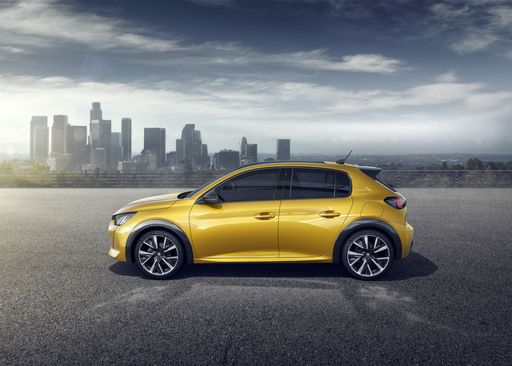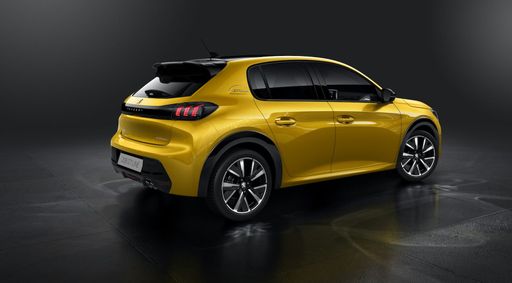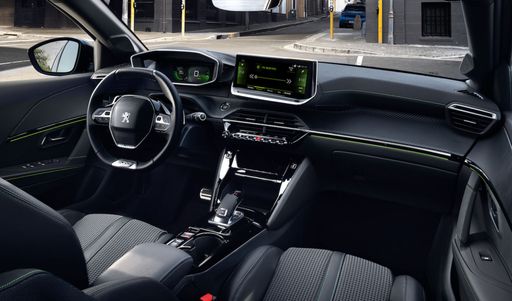Citroen Jumper vs Peugeot 208 – Which one offers the better deal?
Compare performance, boot capacity, efficiency and price at a glance.
Find out which car is the better choice for you – Citroen Jumper or Peugeot 208?
Costs and Efficiency:
Looking at overall running costs, both models reveal some interesting differences in everyday economy.
Peugeot 208 has a convincingly advantage in terms of price – it starts at 20700 £, while the Citroen Jumper costs 55100 £. That’s a price difference of around 34398 £.
In terms of energy consumption, the advantage goes to the Peugeot 208: with 14.10 kWh per 100 km, it’s clearly more efficient than the Citroen Jumper with 26.20 kWh. That’s a difference of about 12.10 kWh.
As for range, the Peugeot 208 performs minimal better – achieving up to 432 km, about 8 km more than the Citroen Jumper.
Engine and Performance:
Power, torque and acceleration say a lot about how a car feels on the road. This is where you see which model delivers more driving dynamics.
When it comes to engine power, the Citroen Jumper has a convincingly edge – offering 279 HP compared to 156 HP. That’s roughly 123 HP more horsepower.
In terms of top speed, the Peugeot 208 performs noticeable better – reaching 200 km/h, while the Citroen Jumper tops out at 130 km/h. The difference is around 70 km/h.
There’s also a difference in torque: Citroen Jumper pulls distinct stronger with 410 Nm compared to 270 Nm. That’s about 140 Nm difference.
Space and Everyday Use:
Whether family car or daily driver – which one offers more room, flexibility and comfort?
Seats: Peugeot 208 offers evident more seating capacity – 5 vs 3.
In curb weight, Peugeot 208 is decisively lighter – 1165 kg compared to 2865 kg. The difference is around 1700 kg.
In maximum load capacity, the Citroen Jumper performs significantly better – up to 17000 L, which is about 15837 L more than the Peugeot 208.
When it comes to payload, Citroen Jumper decisively takes the win – 1385 kg compared to 430 kg. That’s a difference of about 955 kg.
Who comes out on top?
Overall, the Peugeot 208 shows itself to be dominates this comparison and secures the title of DriveDuel Champion.
It convinces with the more balanced overall package and proves to be the more versatile choice for everyday use.

Peugeot 208
Citroen Jumper
The Citroen Jumper impresses with its robust design and exceptional versatility, making it a popular choice for both business and leisure purposes. Its spacious interior is thoughtfully designed to maximise comfort and practicality, providing ample room for passengers and cargo alike. With a smooth driving experience and a range of advanced safety features, the Jumper is well-equipped to handle the demands of modern motoring.
detailsPeugeot 208
The Peugeot 208 exudes a distinctive French charm, combining sleek lines with an assertive stance on the road. Inside, it offers a modern and sophisticated cabin, complete with intuitive technology and high-quality finishes to enhance the driving experience. Its agile handling and efficient performance make it a delightful choice for both city commuting and longer journeys.
details @ www.media.stellantis.com
@ www.media.stellantis.com
 @ www.media.stellantis.com
@ www.media.stellantis.com
 @ www.media.stellantis.com
@ www.media.stellantis.com
 @ www.media.stellantis.com
@ www.media.stellantis.com

|
|
|
|
|
Costs and Consumption |
|
|---|---|
|
Price
55100 - 57800 £
|
Price
20700 - 35200 £
|
|
Consumption L/100km
-
|
Consumption L/100km
4.5 - 5.2 L
|
|
Consumption kWh/100km
26.20 kWh
|
Consumption kWh/100km
14.1 - 15.4 kWh
|
|
Electric Range
424 km
|
Electric Range
362 - 432 km
|
|
Battery Capacity
97.80 kWh
|
Battery Capacity
46 - 51 kWh
|
|
co2
0 g/km
|
co2
0 - 117 g/km
|
|
Fuel tank capacity
-
|
Fuel tank capacity
44 L
|
Dimensions and Body |
|
|---|---|
|
Body Type
Cargo Van
|
Body Type
Hatchback
|
|
Seats
3
|
Seats
5
|
|
Doors
4
|
Doors
5
|
|
Curb weight
2865 - 2940 kg
|
Curb weight
1165 - 1530 kg
|
|
Trunk capacity
-
|
Trunk capacity
309 - 352 L
|
|
Length
5998 - 6363 mm
|
Length
4055 mm
|
|
Width
2050 mm
|
Width
1745 mm
|
|
Height
2612 - 2850 mm
|
Height
1430 mm
|
|
Max trunk capacity
13000 - 17000 L
|
Max trunk capacity
1118 - 1163 L
|
|
Payload
560 - 1385 kg
|
Payload
380 - 430 kg
|
Engine and Performance |
|
|---|---|
|
Engine Type
Electric
|
Engine Type
Petrol, Electric, Petrol MHEV
|
|
Transmission
Automatic
|
Transmission
Manuel, Automatic
|
|
Transmission Detail
Reduction Gearbox
|
Transmission Detail
Manual Gearbox, Reduction Gearbox, Dual-Clutch Automatic
|
|
Drive Type
Front-Wheel Drive
|
Drive Type
Front-Wheel Drive
|
|
Power HP
279 HP
|
Power HP
101 - 156 HP
|
|
Acceleration 0-100km/h
-
|
Acceleration 0-100km/h
8.3 - 10.9 s
|
|
Max Speed
90 - 130 km/h
|
Max Speed
150 - 200 km/h
|
|
Torque
410 Nm
|
Torque
205 - 270 Nm
|
|
Number of Cylinders
-
|
Number of Cylinders
3
|
|
Power kW
205 kW
|
Power kW
74 - 115 kW
|
|
Engine capacity
-
|
Engine capacity
1199 cm3
|
General |
|
|---|---|
|
Model Year
2024
|
Model Year
2023 - 2025
|
|
CO2 Efficiency Class
A
|
CO2 Efficiency Class
D, A, C
|
|
Brand
Citroen
|
Brand
Peugeot
|
Is the Citroen Jumper offered with different drivetrains?
Available configurations include Front-Wheel Drive.
The prices and data displayed are estimates based on German list prices and may vary by country. This information is not legally binding.
